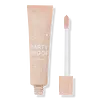What's inside
What's inside
 Key Ingredients
Key Ingredients

 Benefits
Benefits

 Concerns
Concerns

 Ingredients Side-by-side
Ingredients Side-by-side

Cyclopentasiloxane
EmollientIsododecane
EmollientTalc
AbrasiveTrimethylsiloxysilicate
EmollientCyclohexasiloxane
EmollientPolyethylene
AbrasiveZinc Stearate
Cosmetic ColorantTrihydroxystearin
Skin ConditioningPolyhydroxystearic Acid
EmulsifyingVp/Eicosene Copolymer
Synthetic Beeswax
Emulsion StabilisingDisteardimonium Hectorite
StabilisingSimmondsia Chinensis Seed Oil
EmollientMagnesium Stearate
Cosmetic ColorantCaprylyl Glycol
EmollientPropylene Carbonate
SolventPhenoxyethanol
PreservativeAluminum Dimyristate
Emulsion StabilisingTriethoxycaprylylsilane
Disodium Stearoyl Glutamate
CleansingHexylene Glycol
EmulsifyingTocopherol
AntioxidantDimethicone
EmollientCaffeine
Skin ConditioningCI 77163
Cosmetic ColorantIron Oxides
Mica
Cosmetic ColorantCI 77891
Cosmetic ColorantCyclopentasiloxane, Isododecane, Talc, Trimethylsiloxysilicate, Cyclohexasiloxane, Polyethylene, Zinc Stearate, Trihydroxystearin, Polyhydroxystearic Acid, Vp/Eicosene Copolymer, Synthetic Beeswax, Disteardimonium Hectorite, Simmondsia Chinensis Seed Oil, Magnesium Stearate, Caprylyl Glycol, Propylene Carbonate, Phenoxyethanol, Aluminum Dimyristate, Triethoxycaprylylsilane, Disodium Stearoyl Glutamate, Hexylene Glycol, Tocopherol, Dimethicone, Caffeine, CI 77163, Iron Oxides, Mica, CI 77891
Cyclopentasiloxane
EmollientTrimethylsiloxysilicate
EmollientOzokerite
Emulsion StabilisingDimethicone
EmollientEthylhexyl Palmitate
EmollientQuaternium-90 Bentonite
Polyethylene
AbrasiveEthylhexylglycerin
Skin ConditioningPropylene Carbonate
SolventSorbitan Sesquioleate
EmulsifyingTocopherol
AntioxidantPhenoxyethanol
PreservativeCI 77891
Cosmetic ColorantCI 77499
Cosmetic ColorantCI 77492
Cosmetic ColorantCI 77491
Cosmetic ColorantIngredients Explained
These ingredients are found in both products.
Ingredients higher up in an ingredient list are typically present in a larger amount.
Ci 77891 is a white pigment from Titanium dioxide. It is naturally found in minerals such as rutile and ilmenite.
It's main function is to add a white color to cosmetics. It can also be mixed with other colors to create different shades.
Ci 77891 is commonly found in sunscreens due to its ability to block UV rays.
Learn more about CI 77891Cyclopentasiloxane, or D5, is a silicone used to improve texture of products and trap moisture.
D5 is considered lightweight and volatile. Volatile means it evaporates quickly after application. Once evaporated, D5 leaves a thin barrier that helps keep skin hydrated.
It is also an emollient. Emollients help soften the skin and prevent water loss. Silicones create a silky texture in products. D5 helps other ingredients become more spreadable.
Studies show D5 is safe to use in skincare products. We recommend speaking with a skincare professional if you have concerns.
Learn more about CyclopentasiloxaneDimethicone is a type of synthetic silicone created from natural materials such as quartz.
What it does:
Dimethicone comes in different viscosities:
Depending on the viscosity, dimethicone has different properties.
Ingredients lists don't always show which type is used, so we recommend reaching out to the brand if you have questions about the viscosity.
This ingredient is unlikely to cause irritation because it does not get absorbed into skin. However, people with silicone allergies should be careful about using this ingredient.
Note: Dimethicone may contribute to pilling. This is because it is not oil or water soluble, so pilling may occur when layered with products. When mixed with heavy oils in a formula, the outcome is also quite greasy.
Learn more about DimethiconePhenoxyethanol is a preservative that has germicide, antimicrobial, and aromatic properties. Studies show that phenoxyethanol can prevent microbial growth. By itself, it has a scent that is similar to that of a rose.
It's often used in formulations along with Caprylyl Glycol to preserve the shelf life of products.
Polyethylene is a synthetic ingredient that helps the skin retain moisture. It is a polymer.
It is also typically used within product formulations to help bind solid ingredients together and thicken oil-based ingredients. When added to balms and emulsions, it helps increase the melting point temperature.
This ingredient is a solvent. It helps dissolve active ingredients and alter the texture of products.
Propylene Carbonate is commonly used in makeup and with clay, such as montmorillonite or bentonite.
Studies show this ingredient to be safe for cosmetics. When it is undiluted, it can cause skin irritation. (It is always diluted in skincare and makeup). This ingredient is water-soluble.
Propylene Carbonate is created from propylene glycol and carbonic acid.
Learn more about Propylene CarbonateTocopherol (also known as Vitamin E) is a common antioxidant used to help protect the skin from free-radicals and strengthen the skin barrier. It's also fat soluble - this means our skin is great at absorbing it.
Vitamin E also helps keep your natural skin lipids healthy. Your lipid skin barrier naturally consists of lipids, ceramides, and fatty acids. Vitamin E offers extra protection for your skin’s lipid barrier, keeping your skin healthy and nourished.
Another benefit is a bit of UV protection. Vitamin E helps reduce the damage caused by UVB rays. (It should not replace your sunscreen). Combining it with Vitamin C can decrease sunburned cells and hyperpigmentation after UV exposure.
You might have noticed Vitamin E + C often paired together. This is because it is great at stabilizing Vitamin C. Using the two together helps increase the effectiveness of both ingredients.
There are often claims that Vitamin E can reduce/prevent scarring, but these claims haven't been confirmed by scientific research.
Learn more about TocopherolThis silicone is an emollient. Emollients create a thin film on the skin to prevent moisture from escaping.
It is not soluble in water and helps increase water-resistance in products.
According to a manufacturer, it can blend seamlessly with silicone oils, such as Cyclopentasiloxane.
Learn more about Trimethylsiloxysilicate